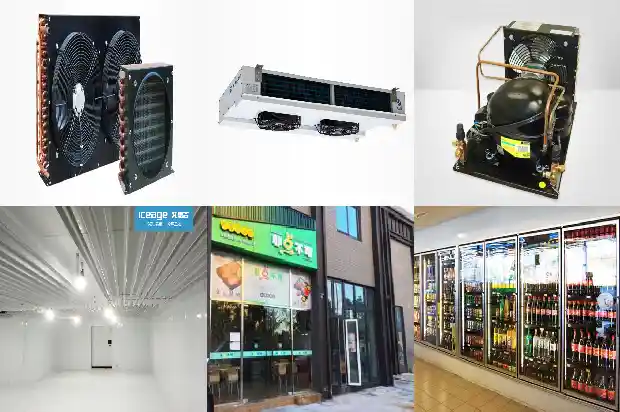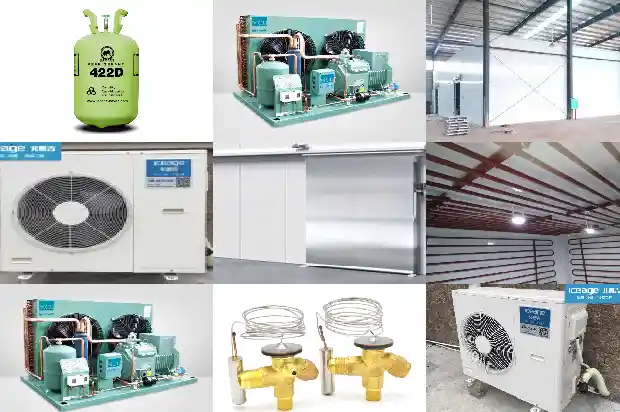Water-cooled Split Air Conditioner Unit: Components and Installation
2024-08-27
(1) The main structure of a water-cooled split air conditioner is composed of three parts:
① Indoor unit, including evaporator, fan, capillary tube and electrical control part.
② Outdoor unit, including compressor, condenser and condensing fan.
③ Connecting pipe, including refrigerant liquid pipe and suction pipe.
① Indoor unit, including evaporator, fan, capillary tube and electrical control part.
② Outdoor unit, including compressor, condenser and condensing fan.
③ Connecting pipe, including refrigerant liquid pipe and suction pipe.
(2) Installation of water-cooled split air conditioning unit
① Determine the drilling position on the wall according to the position of the pipe connection of the indoor unit.
② Unfold the connecting pipe: Before installation, the connecting pipe must be slowly unfolded a small section at a time. Do not pull the connecting pipe vigorously to prevent damage to the connecting pipe due to violent pulling.
③ Bend the connecting pipe according to the predetermined pipeline direction and align the pipe end with the joints of the indoor and outdoor units. Operate carefully when bending. Do not break or bend the pipe. The bending radius of the pipe should be as large as possible, and its bending radius is not less than 100mm.
④ The connecting pipe of indoor and outdoor units adopts the form of a bell mouth joint.
⑤ After connecting the indoor and outdoor units, the air in the pipeline should be removed. When removing the air, the auxiliary valve on the stop valve of the indoor unit or outdoor unit can be used.
⑥ After the air in the connecting pipe is removed, the stop valve can be fully opened for leak detection. Confirm that there is no refrigerant leakage, and then use a refrigerant gas leak detector for leak detection.
⑦ After the above work is completed, insulation material can be wrapped around the pipe nut joint.
① Determine the drilling position on the wall according to the position of the pipe connection of the indoor unit.

② Unfold the connecting pipe: Before installation, the connecting pipe must be slowly unfolded a small section at a time. Do not pull the connecting pipe vigorously to prevent damage to the connecting pipe due to violent pulling.
③ Bend the connecting pipe according to the predetermined pipeline direction and align the pipe end with the joints of the indoor and outdoor units. Operate carefully when bending. Do not break or bend the pipe. The bending radius of the pipe should be as large as possible, and its bending radius is not less than 100mm.
④ The connecting pipe of indoor and outdoor units adopts the form of a bell mouth joint.

⑤ After connecting the indoor and outdoor units, the air in the pipeline should be removed. When removing the air, the auxiliary valve on the stop valve of the indoor unit or outdoor unit can be used.
⑥ After the air in the connecting pipe is removed, the stop valve can be fully opened for leak detection. Confirm that there is no refrigerant leakage, and then use a refrigerant gas leak detector for leak detection.
⑦ After the above work is completed, insulation material can be wrapped around the pipe nut joint.
Related Articles
- Basic Faults and Preventive Maintenance of Water - cooled Units
- Three Common Methods for Removing Water Scale from Water - cooled Condensers
- What Are the Differences Between Chillers and General Water - cooled Equipment?
- Selection of Bypass Control Valves for Air - conditioning Water Systems
- Operation of Screw - type Water - cooled Chiller Units
- Characteristics and Differences among Water System, Air System and Refrigerant System
- Accident Handling and Precautions for Circulating Water Pumps
- Startup, Shutdown and Accident Handling of Jet Water Pump
- How to Select and Use Water Pumps for Air - conditioning Systems?
- How to Choose Between Water-cooled and Air-cooled Cold Storage?
- Introduction to Various Water Tanks in Air - conditioning Systems
- For Computer Room Air Conditioners, Besides Air - cooled and Water - cooled, What Other Cooling Methods Are There?
- Refrigeration System Failures: Handling System Blockages and Water Infiltration
- Both are dual - connected systems. How to choose between air - fluorine - ground - water and air - water - ground - water systems after all?
- Precautions for the Installation and Use of Water Flow Switches
- Water Flow Control Technology for Small Air-cooled Hot and Cold Water Units
- How to accurately choose water-cooled and air-cooled chillers?
- 4 Points on Causes of Water Leakage in Closed Cooling Towers
